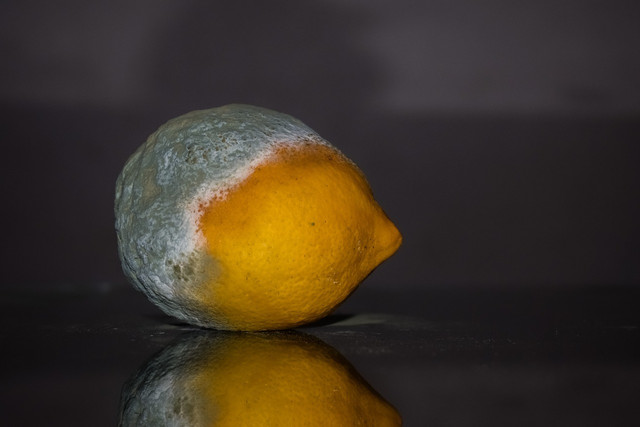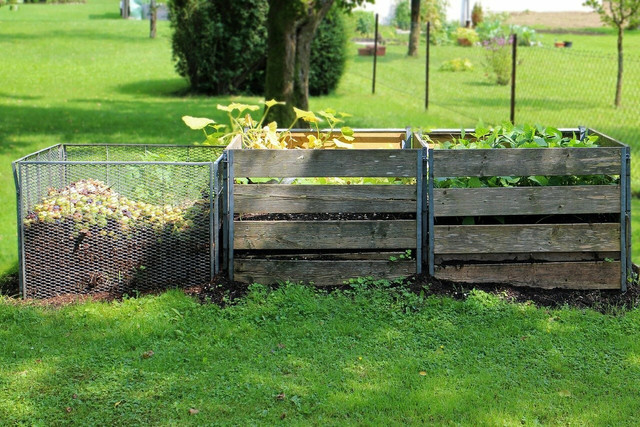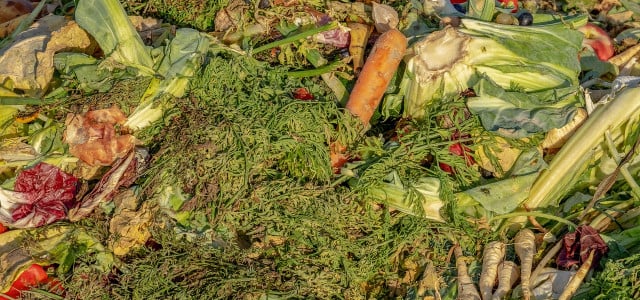You have compost mold and you’re worried it’s dangerous? In this article, we will discuss why your compost has mold – and how to mix it properly so you can still use it.
When you leave things to decompose in a compost heap, it is inevitable that you might find some mold. When found present on dead matter like compost, mold signifies its full decomposition. This doesn’t mean it is dangerous – in fact, it can even be good for your compost if mixed properly.
We come across mold and mold spores daily, which for the most part are harmless in small doses. Mold can find itself in various forms, textures, and colors, including black, white, orange, green, or purple. But typically, the mold you see on a compost heap is white or green.
While mold is usually harmless, it’s not something you should want to see in your compost and could mean something is wrong with your compost heap.
What to look out for: badly smelling or sludgy-looking mold. This could suggest the presence of anaerobic bacteria, an unwanted side effect of a misbehaving compost heap.
What do Different Types of Mold Look Like?

The common mold comes with a cotton-like texture. Its colors are usually dependent on the type of material it feeds, but can also be affected by climate and region.
Here are some of the main types of mold found in compost:
- Green mold: the most commonly occurring, usually growing in compost with large amounts of food waste. Green mold spreads fast by digesting nitrogen-carbon compounds found in food scraps. It thrives in moist compost, so keeping a better balance of dry and wet ingredients could help minimize or avoid the problem.
- White mold: usually found in wood particles in compost. If found in your hot compost heap, it actually might be a good sign that your compost is decomposing correctly.
- Pink mold: appearing a more orangey color – it is a bacteria usually caused by cleaning substances in your compost. This mold can be dangerous for your compost as it has the capability to kill the organisms that help in the decomposition process. Eliminate this by making sure to not add water with soap into your compost pile.
Note: While most mold is harmless, large amounts of ingested mold can be very harmful causing infections like Aspergillosis and Histoplasmosis. Therefore, it is important to wear gloves and a mask, keep pets away and wash your hands after when working with a large moldy compost pile. Mold spores can also create a mild allergic reaction for those with hayfever or other allergies.
It should be safe to handle and use in your garden as the molds usually die off once the decomposition process of your compost is complete.
Can You Put Moldy Food in Compost?
Though you wouldn’t expect to find toxic mold in food, moldy food should never be eaten as you don’t know how this unidentified fungal growth may affect your system. But when you do find your food has gone rotten or moldy can you then put it in a compost bin?
In most cases, rotten or moldy food will be safe in a compost pile. The diseased material is usually destroyed during active composting. Just make sure to turn or mix it regularly. Read our guide on what you can compost.
How to Prevent Mold on Compost



So we know now mold shouldn’t be encouraged for our compost – but how do we stop compost from molding and what is the best solution for moldy compost?
Creating the perfect compost is much like following your favorite cake recipe – collect the ingredients together, mix them well and let them bake (decompose).
The best compost heaps consist of a balanced mix of green and brown materials. While the green materials, e.g. kitchen scraps, grass, or leaves, give the bacteria something to feast on and grow, the brown materials help the compost breathe and prevent it from getting too wet.
The wetter the compost heap is the more the bacteria thrive and can turn moldy. Turn your compost regularly and use a container with holes to allow for better airflow and a dryer compost. The excess moisture can also be absorbed by adding more brown materials, such as small pieces of cardboard.
Conversely, when a compost heap is too dry, add water or more green materials.
Read more:
- Can You Compost Tea Bags?
- How to Lower the Humidity in Your House: Tips for Avoiding Mold
- How to Compost in an Apartment: 4 Options & Tips
Important Information regarding Health-related Topics.
** Links to retailers marked with ** or underlined orange are partially partner links: If you buy here, you actively support Utopia.org, because we will receive a small part of the sales proceeds. More info.Do you like this post?






